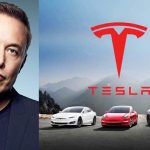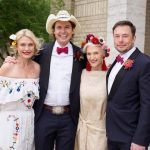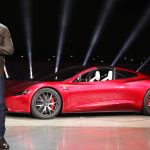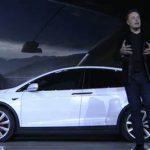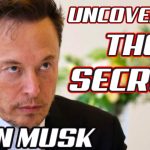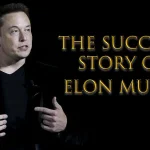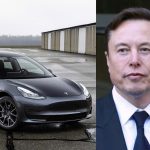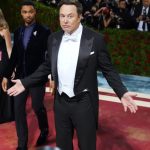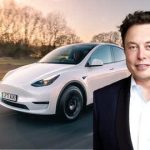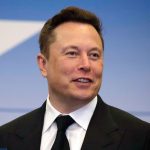Elon Musk: Strategic Thinking in Investing in Breakthrough Technologies
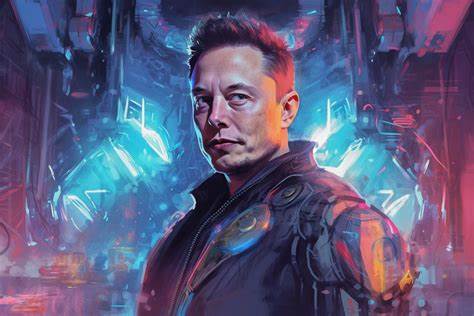
Elon Musk: Strategic Thinking in Investing in Breakthrough Technologies 🚀
Elon Musk’s name reverberates across the global technology and business landscape as a synonym for visionary brilliance and the rare ability to transform audacious ideas into tangible realities. From Tesla’s electric revolution to SpaceX’s cosmic ambitions, Musk has redefined industries with a blend of passion, perseverance, and razor-sharp strategic thinking. His secret sauce isn’t just dreaming big—it’s his deliberate approach to investing in breakthrough technologies that tackle humanity’s toughest challenges. As of March 31, 2025, Musk’s ventures stand as testaments to this method, inspiring millions while reshaping our world. So, how does he do it? Let’s dive into the five pillars of his strategic playbook and uncover the lessons they hold for us all.
1. Identify “Core Problems” and Seek Radical Solutions 🌍
Musk doesn’t chase fleeting fads or incremental tweaks—he zeros in on humanity’s “core problems,” the existential riddles that demand radical answers. He asks the big questions: How do we combat climate change? How do we survive beyond Earth? This focus birthed Tesla and SpaceX, companies that aren’t just businesses but bold solutions to pressing global crises.
- Tesla: More than an automaker, Tesla is Musk’s answer to environmental degradation and fossil fuel dependency. In 2004, when he poured $70 million into the fledgling startup, electric vehicles (EVs) were a punchline—slow, clunky, and scoffed at by Detroit giants. Musk saw past the skepticism, envisioning a world where transportation could be sustainable and sexy. By 2025, Tesla’s 1.8 million annual vehicle output and $1 trillion valuation prove his foresight—EVs are mainstream, cutting millions of tons of CO2 yearly. On X this March, he wrote, “Tesla’s not about cars—it’s about saving the planet, one drive at a time.”
- SpaceX: Founded in 2002 with $100 million from his PayPal sale, SpaceX tackles an even grander problem: humanity’s survival. Musk views Earth as fragile—vulnerable to asteroids, climate collapse, or war—and sees space as our insurance policy. His goal? Make humans multi-planetary, starting with Mars. By 2025, Starship’s orbital success edges this closer, a feat born from his refusal to accept a single-planet fate. “We need a backup,” he tweeted last year, echoing his cosmic mission.
Musk’s lesson here is profound: don’t nibble at the edges—attack the root. Identify problems that matter, then craft solutions so radical they rewrite the rules. For innovators, it’s a call to look beyond trends and solve what truly threatens or limits us.
2. Apply “First Principles Thinking” 🧠
Musk’s intellectual superpower is “first principles thinking”—a method that dismantles assumptions, strips problems to their physics-based bones, and rebuilds from scratch. Rather than tweaking what exists, he starts with the fundamentals, asking, “What’s possible if we ignore the status quo?”
At SpaceX, this shone brightly. Rocket costs were astronomical—$20,000/kg to orbit—because suppliers charged exorbitant rates for prebuilt components. Musk didn’t haggle; he questioned: “What are rockets made of? Aluminum, titanium, fuel—how much do those cost raw?” By 2008, SpaceX was crafting 90% of its parts in-house, slashing expenses. The result? Falcon 9’s reusable design now orbits payloads for $2,000/kg by 2025, a tenfold drop that’s upended the industry. On X, he explained in 2025, “First principles cut through the noise—build from truth, not tradition.”
Tesla followed suit. Battery packs were pricey and inefficient in the 2000s. Musk’s team deconstructed them—lithium, cobalt, electrolytes—and optimized every layer, birthing gigafactories that churn out cells at scale. By 2025, Tesla’s battery costs have halved since 2015, fueling its EV dominance. This isn’t tinkering—it’s reinvention. For us, it’s a mindset shift: question “how it’s done,” boil it down to basics, and innovate from there. Your next breakthrough might hide in what others assume can’t change.
3. Embrace Risk and Failure 💔➡️💪
Investing in uncharted tech is a high-wire act, and Musk walks it without a net—because he knows falling is part of flying. He embraces risk as a teacher, not a terror, viewing failure as data, not defeat. SpaceX’s early years were a crash course—literally. The first three Falcon 1 launches (2006-2008) flamed out, nearly bankrupting him. “I was weeks from zero,” he recalled on X this year. But each fireball yielded lessons—engine tweaks, structural fixes—paving the way for the fourth’s success and a NASA lifeline.
Starship’s saga repeats this. From 2020 to 2024, test flights exploded in spectacular fashion, mocked as “Musk’s fireworks” on X. Yet, by late 2024, it orbited flawlessly, a triumph of iterative grit. Tesla’s Model 3 “production hell” in 2017-2018—delays, defects—pushed Musk to sleep on the factory floor, refining until it worked. By 2025, Tesla’s output soars. “Failure’s my best professor,” he tweeted in March. The takeaway? Risk isn’t the enemy—stagnation is. Embrace the plunge, learn from the crash, and climb higher. For entrepreneurs, it’s permission to fail boldly, as long as you rise smarter.

4. Build a Talented Team and Inspire 🤝
Great ideas are paper tigers without a team to breathe life into them, and Musk knows this. He hunts for talent—engineers, dreamers, doers—who share his passion and thrive on challenge. At SpaceX, he lured rocket scientists from NASA with Mars as bait; at Tesla, he snagged innovators eager to ditch fossil fuels. By 2025, SpaceX’s 12,000-strong crew and Tesla’s 140,000 workers are powerhouses, churning out rockets and EVs at scale.
But it’s not just hiring—it’s inspiring. Musk’s a Pied Piper of purpose, painting visions so vivid his teams can’t resist. At a 2025 Tesla rally, he told staff, “We’re not making cars—we’re forging the future.” SpaceX’s Starbase hums with engineers who’ve bought into his “humans on Mars” gospel—many stuck through 2008’s near-collapse because they believed. On X, a Neuralink recruit posted, “Musk makes you feel like you’re rewriting history.” His 120-hour weeks set a brutal pace, but his zeal ignites theirs. For us, it’s a blueprint: surround yourself with brilliance, then light a fire under them. Inspire with a “why” so big they’ll follow you to the stars—or at least the factory floor.
5. Invest Long-Term and Be Patient ⏳
Breakthrough tech isn’t a sprint—it’s a marathon, and Musk runs it with eyes on the horizon, not the finish line. He shuns quick bucks for lasting impact, betting on ventures that take years to bloom. Tesla bled cash for a decade—$6 billion in losses by 2018—before turning profitable. Musk endured, scaling gigafactories and refining batteries until, by 2025, it’s a trillion-dollar juggernaut. SpaceX spent 13 years perfecting reusable rockets—Falcon 1’s 2008 win was a flicker after years of dark; Starship’s 2024 orbit came after a decade of blasts. “Patience is my secret weapon,” he tweeted this year.
This long-game focus isn’t sexy—it’s grueling. Investors grumbled, X doubters jeered, but Musk held firm, building companies that reshape society, not just balance sheets. Starlink’s 6,000 satellites by 2025 took a decade to profit, now funding Mars. Neuralink’s brain-chip trials, slow since 2016, edge toward breakthroughs. For innovators, it’s a gut check: resist the lure of fast wins. Plant seeds for a forest, not a flowerbed—value grows with time, if you can wait.
Musk’s Playbook: Lessons for the Bold
Musk’s strategic genius in breakthrough tech boils down to this: Identify core problems—solve what matters most, radically. Apply first principles—strip it bare, rebuild it better. Embrace risk and failure—fall, learn, soar. Build a talented team and inspire—ignite a crew that shares your madness. Invest long-term and be patient—play for decades, not quarters. By 2025, these pillars have birthed Tesla’s EV empire, SpaceX’s cosmic reign, and Neuralink’s mind-bending promise—proof they work.
For tech dreamers and business builders, Musk’s approach is gold. He’s not perfect—delays irk, tweets spark chaos—but his wins dwarf the noise. On X this March, a startup founder wrote, “Musk taught me to think big and stick it out.” Whether you’re coding an app, designing a gadget, or plotting a venture, his lessons cut through: target the root, rethink the game, risk it all, rally the best, and wait for the harvest. Musk’s not just a mogul—he’s a mentor in motion, showing that breakthrough success isn’t luck—it’s strategy, executed with unrelenting will. So, what’s your core problem? Your first principle? Your risk to take? Musk’s playbook awaits—grab it, and build.

